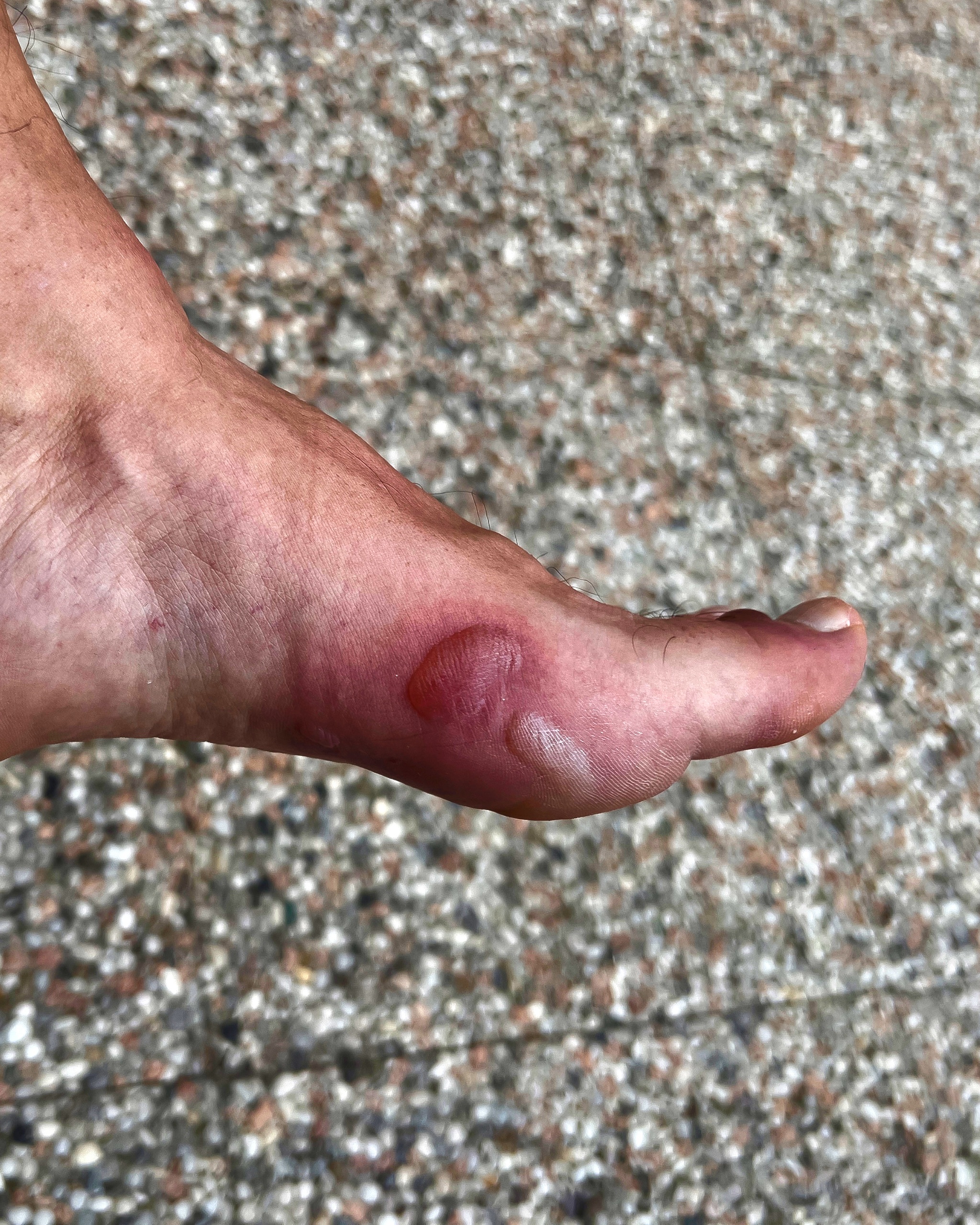Friction Blister
1. Overview A friction blister is a small, raised bubble on the skin filled with clear liquid, caused by repeated rubbing or pressure. This rubbing separates the top layers of skin, and fluid fills the space, creating a cushion. Anyone can get a friction blister, especially those who are active, wear new shoes, or perform repetitive motions with their hands. Thankfully, friction blisters are not contagious. While usually minor, they can be quite painful and sometimes interfere with daily activities or sports. We understand how a seemingly small blister can cause a lot of discomfort, and we're here to help you understand them better.
2. Symptoms You might experience some of these common signs with a friction blister:
- A raised, bubble-like sac on the skin, often round or oval.
- The sac is typically filled with clear fluid (serum), but can sometimes contain blood if small blood vessels are damaged (blood blister).
- Pain or tenderness at the site, especially when touched or pressed.
- Redness and sometimes mild swelling around the blister.
- Itching or a burning sensation before the blister fully forms.
- The skin over the blister may be thin and fragile.
- If the blister breaks, the raw skin underneath can be very sore.
- Discomfort when wearing shoes or using the affected body part.
3. Diagnosis Diagnosing a friction blister is usually straightforward. A doctor or healthcare provider can typically identify it just by looking at the blister and asking about your recent activities. They'll consider if you've been doing anything that could cause rubbing or pressure on that specific area of skin. No special tests are usually needed unless there's a concern about infection or another underlying skin condition.
4. Duration & Outlook Most friction blisters heal on their own within a few days to a week, especially if the source of friction is removed and the blister is protected. They are an acute condition, meaning they appear suddenly due to a specific cause and don't usually last long. The fluid inside will gradually be reabsorbed by the body, and the overlying skin will dry out and peel off. It's important to watch for warning signs of infection, such as pus, increasing redness, warmth, swelling, or fever, especially if the blister has popped.
5. Prevention The best way to deal with friction blisters is to prevent them from forming in the first place.
- Wear properly fitting shoes that aren't too tight or too loose.
- Break in new shoes gradually.
- Wear moisture-wicking socks, or two pairs of socks if one pair isn't enough to reduce friction.
- Use protective coverings like bandages, moleskin, or athletic tape on areas prone to rubbing before activities.
- Wear gloves when doing manual labor or activities that involve repetitive hand movements.
- Keep skin dry, as moisture can increase friction.
6. Causes & Triggers Friction blisters are caused by repeated rubbing, pressure, or shearing forces on the skin. This friction causes the outer layers of skin to separate from the inner layers, and fluid fills the gap. Common triggers include:
- Wearing ill-fitting shoes, especially during activities like running or hiking.
- Not wearing socks, or wearing socks made of materials that don't wick moisture well.
- Repetitive motions, such as using tools (e.g., a shovel or rake) or playing certain sports (e.g., tennis, gymnastics).
- Moist or sweaty skin, which can increase friction. Anyone can develop a friction blister, but they are most common in people who are physically active, athletes, soldiers, or those who work with their hands. Having sensitive skin can also make you more prone to them.
7. When to see a doctor While most friction blisters can be managed at home, it's important to see a doctor or dermatologist if you notice:
- Signs of infection: This includes pus (yellow or green discharge), increased pain, swelling, redness spreading around the blister, or warmth in the area. If you develop a fever, seek medical attention.
- The blister is very large, extremely painful, or prevents you from walking or using your hands.
- Blisters appear in unusual places without any obvious friction, or if they recur frequently.
- You have diabetes or poor circulation, as these conditions can make healing more difficult and increase the risk of infection.
It's always best to consult a healthcare professional if you're unsure or concerned about any skin condition. They can provide an accurate diagnosis and guide you on the best course of action.
8. Frequently Asked Questions (FAQs):
- Should I pop my blister? It's generally best not to pop a blister if it's intact. The unbroken skin provides a natural barrier against infection. If it's very large and painful, a healthcare professional may drain it safely. If it pops on its own, keep it clean.
- What is the fluid inside a blister? The clear fluid is usually serum, which is the liquid part of blood without the red blood cells or clotting factors. If it's a blood blister, it contains blood from damaged capillaries.
- How can I stop getting blisters in the same spot? Identify the cause of friction. This might mean new shoes, better socks, using protective padding, or adjusting how you perform an activity.
- Are friction blisters serious? Most are not serious and heal on their own. However, they can become infected if not cared for properly, especially if they break open.
- Can I still exercise with a blister? It depends on the location and severity. If possible, try to protect the blister with a bandage or padding. If it's very painful, it might be best to rest the affected area to allow it to heal.


